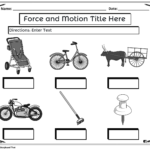Mobile app development is one of the fastest-growing fields in the tech world. It plays a central role in shaping how people interact with the digital world, whether it’s for entertainment, communication, or business. From simple apps to complex solutions, mobile apps have become indispensable tools for individuals and organizations alike. With millions of apps available on the market, it’s clear that mobile development is more than just a trend—it’s a fundamental part of modern life. The rapid growth of smartphones and tablets has made mobile apps essential in our daily routines. In this article, we’ll explore the key aspects of mobile app development, the technologies that power it, and how it is changing the future of business and technology.
What is Mobile App Development?
Definition of Mobile App Development
Mobile app development refers to the process of creating software applications that run on mobile devices such as smartphones and tablets. These applications are designed to provide users with various functionalities, from entertainment and social networking to banking and healthcare. The development process involves writing code, designing user interfaces, and testing to ensure the app functions correctly across different devices and platforms. It requires a blend of programming knowledge, creativity, and an understanding of user needs to build successful applications.
Key Components Involved in Developing Mobile Applications
Mobile app development includes several key components. First, there’s the front-end development, which focuses on the user interface (UI) and user experience (UX). This part ensures the app is visually appealing and easy to use. Then, there’s the back-end development, which handles the server-side functions, such as database management and data processing. These components work together to deliver a seamless user experience. Furthermore, mobile apps rely on third-party integrations, such as APIs (Application Programming Interfaces), to enable additional features like payment systems, geolocation, or social media sharing.
Types of Mobile Apps: Native, Hybrid, and Web Apps
Mobile apps are typically categorized into three types: Native apps, Hybrid apps, and Web apps. Native apps are designed for specific platforms like iOS or Android and are built using platform-specific programming languages such as Swift (iOS) or Java (Android). They offer optimal performance and user experience. Hybrid apps, on the other hand, are designed to work across multiple platforms using a single codebase, often built with web technologies like HTML, CSS, and JavaScript. While hybrid apps are more cost-effective, they may not offer the same performance as native apps. Lastly, Web apps are not downloaded from app stores but are accessed via web browsers. They offer a more flexible solution but may have limited access to device features compared to native apps.
Key Phases of Mobile App Development
Planning and Strategy
The first phase in Mobile App Development is planning and strategy. During this phase, the goals of the app are clearly defined, and the target audience is identified. It’s essential to understand what problem the app will solve and how it will stand out in a crowded market. A thorough market research process helps developers understand user needs, competitor strategies, and potential challenges. This phase is crucial because it sets the foundation for the entire development cycle. Without a clear plan, the app may face issues like poor user engagement or a lack of features that the target audience values.
Design
The design phase focuses on creating the visual layout and flow of the app. The goal is to ensure that the app is not only functional but also easy and enjoyable to use. UI (User Interface) design involves crafting the look of the app, such as colors, fonts, and buttons. Meanwhile, UX (User Experience) design ensures that the app is intuitive and user-friendly. This includes determining how users will navigate through the app and what actions they can take. In this phase, wireframes and prototypes are often developed to provide a clear idea of how the final app will look and operate. A well-designed app enhances user retention and overall satisfaction.
Development
Once the design is finalized, the next step is development, which can be split into front-end and back-end development. Front-end development focuses on the client side of the app, ensuring that users can interact with the app in a smooth and responsive manner. Back-end development handles the server side, including database management, APIs, and integration with other services. The development team writes the code, implements features, and ensures that the app functions as intended. This phase may also involve integrating third-party services like payment gateways, cloud storage, and push notifications to enhance the app’s functionality.
Testing and Debugging
Testing and debugging is one of the most important phases in mobile app development. This is when the app undergoes thorough checks for bugs, glitches, and errors. The testing process involves simulating real-world use cases to ensure that the app functions well on various devices and platforms. Developers use different testing methods, such as unit testing, integration testing, and user acceptance testing (UAT), to identify and fix issues before the app is launched. Debugging tools are used to track down and resolve errors in the app’s code. This phase ensures that the app meets quality standards and is ready for a seamless user experience.
Launch and Post-launch
The launch phase involves deploying the app on app stores like the Google Play Store or Apple App Store. The app must meet the store’s guidelines before it is approved and made available to the public. Once the app is launched, developers monitor its performance, gather user feedback, and address any issues that arise. Post-launch activities include regular updates to improve features, fix bugs, and enhance security. Additionally, marketing efforts are often used to increase visibility and drive downloads. Continuous improvement is key to retaining users and ensuring the app remains relevant in a competitive market.
Choosing the Right Development Platform
Android vs. iOS vs. Cross-platform Development
One of the first decisions in mobile app development is choosing between Android, iOS, or cross-platform development. Android apps are typically developed using Java or Kotlin, while iOS apps are created using Swift or Objective-C. Each platform has its own strengths and challenges. For example, Android has a larger user base worldwide, but iOS tends to generate higher revenue from app sales and in-app purchases. Cross-platform development, using frameworks like React Native or Flutter, allows developers to write a single codebase for both Android and iOS. While cross-platform apps can save time and costs, they might not offer the same performance as native apps.
Factors to Consider When Choosing a Platform
When deciding on a development platform, several factors must be considered, such as the target audience, the app’s features, and the budget. For example, if the target audience primarily uses Android devices, it makes sense to develop the app for that platform first. Similarly, if the app needs to access specific hardware features, such as NFC or Bluetooth, native development might be the best choice. Budget is also an important consideration, as developing separate apps for Android and iOS can be more expensive than building a cross-platform app.
Key Technologies in Mobile App Development
Programming Languages (e.g., Java, Swift, Kotlin, Dart)
Mobile app development relies heavily on programming languages. Java is widely used for Android app development, providing a strong foundation and extensive libraries. Swift is the primary language for iOS apps, known for its performance and ease of use. Kotlin is an alternative to Java for Android development, offering enhanced functionality and conciseness. Dart is used with the Flutter framework for cross-platform development, allowing developers to write code once and run it on both Android and iOS. Each language has its own set of advantages depending on the app’s requirements.
Frameworks and Tools (e.g., React Native, Flutter, Xamarin)
Frameworks like React Native, Flutter, and Xamarin enable cross-platform app development. React Native, created by Facebook, allows developers to use JavaScript to create native-like apps. Flutter, developed by Google, uses Dart and offers a rich set of pre-designed widgets, making it easy to build highly interactive apps. Xamarin is a Microsoft framework that uses C# for cross-platform development. These frameworks are popular because they save time and resources, as developers can reuse most of the code for both Android and iOS versions of an app.
APIs and Third-party Integrations
APIs (Application Programming Interfaces) are essential in modern mobile app development, as they enable apps to interact with external services. For example, APIs allow apps to integrate payment systems like PayPal or Stripe, pull data from social media platforms, or utilize mapping services like Google Maps. Third-party integrations enhance an app’s functionality without having to build everything from scratch. These integrations are essential for providing a rich user experience and adding features like notifications, analytics, and cloud storage.
Why Mobile App Development is Important for Businesses
How Mobile Apps Help Businesses Reach a Larger Audience
Mobile apps provide businesses with a direct channel to reach their customers. With millions of people using smartphones every day, apps are an excellent way to expand a business’s reach. Apps enable companies to engage users on a personal level, offering customized experiences, promotions, and communication. They also allow businesses to remain accessible to customers 24/7, whether through customer support, product browsing, or online purchasing. The mobile-first approach has become crucial for businesses to stay competitive in today’s digital age.
The Role of Mobile Apps in Improving Customer Engagement and Loyalty
Mobile apps can significantly improve customer engagement by offering personalized experiences. Features like push notifications allow businesses to send timely updates, promotions, and reminders directly to users’ phones. Mobile apps also collect data on user preferences and behaviors, enabling businesses to tailor content and offers to individual customers. This level of personalization fosters stronger relationships and encourages repeat business. Additionally, loyalty programs integrated into mobile apps incentivize customers to continue using a brand’s products or services, further increasing engagement and retention.
Boosting Brand Recognition and Sales Through Mobile Solutions
A well-designed mobile app can serve as a powerful marketing tool. By creating an app that adds value to users’ lives, businesses can increase their brand visibility and enhance their reputation. Apps are a convenient way for customers to interact with a business, and with features like in-app purchases, businesses can increase sales directly through the app. Mobile apps also enable businesses to collect customer feedback easily, which can be used to refine products, services, and user experiences, ultimately leading to improved sales and growth.
Conclusion
Mobile app development is an essential part of the modern tech landscape, offering solutions that meet a wide range of needs, from entertainment and communication to business and healthcare. As mobile technology continues to evolve, the potential for innovative mobile apps is endless. By understanding the key phases of development, choosing the right platform, and utilizing the latest technologies, developers can create apps that stand out in a competitive market. For businesses, mobile apps offer a unique opportunity to connect with customers, drive engagement, and increase revenue. The future of mobile app development looks bright, and those who stay ahead of the trends will continue to shape the next wave of technological advancement.







